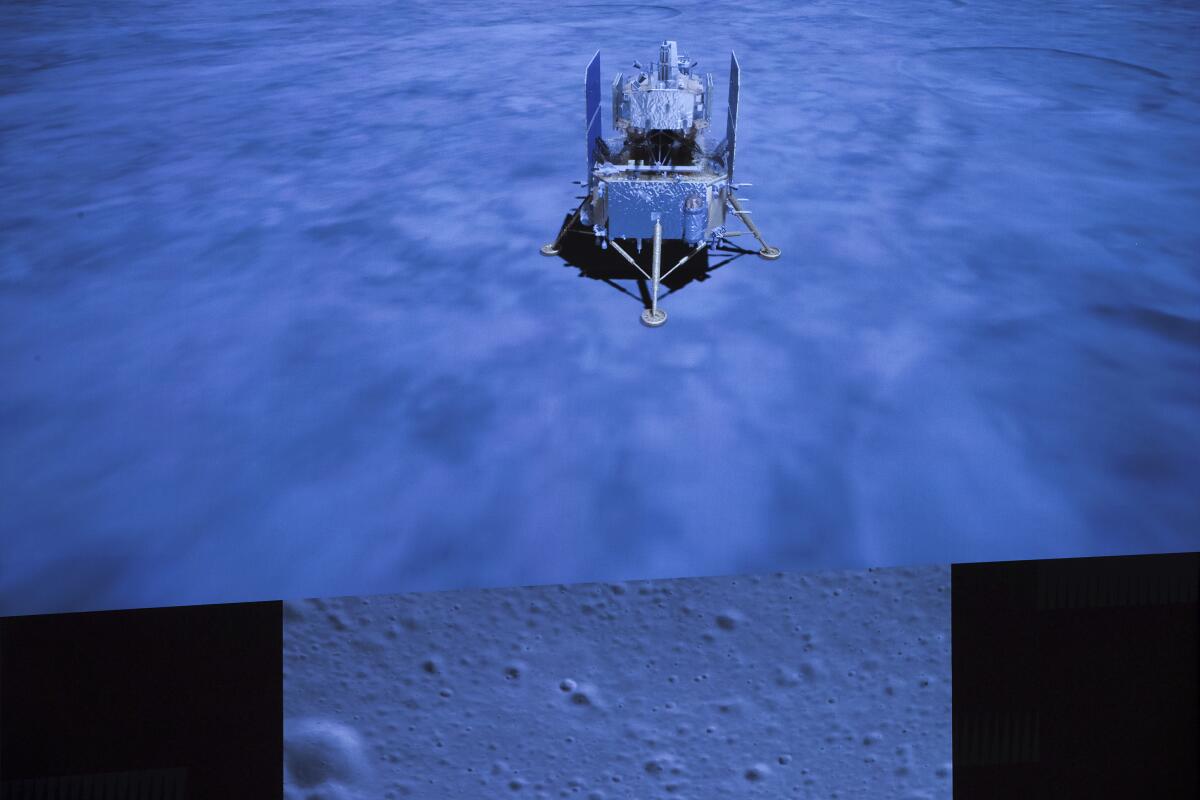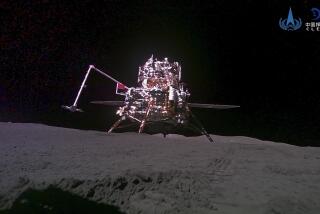Chinese spacecraft collects moon rocks to take back to Earth

A Chinese spacecraft took samples of the moon’s surface Wednesday as part of a mission to bring lunar rocks back to Earth for the first time since the 1970s, adding to a string of successes for Beijing’s increasingly ambitious space program.
The Chang’e 5 probe touched down Tuesday on the Sea of Storms on the moon’s near side after descending from an orbiter, the China National Space Administration said. It released images of the barren landing site showing the lander’s shadow.
“Chang’e has collected moon samples,” the agency said in a statement.
The probe, launched Nov. 24 from the tropical island of Hainan, is the latest venture by China’s space program, which sent the country’s first astronaut into orbit in 2003. Beijing also has a spacecraft en route to Mars and aims eventually to land a human on the moon.
This week’s landing is “a historic step in China’s cooperation with the international community in the peaceful use of outer space,” said Hua Chunying, a foreign ministry spokeswoman.
“China will continue to promote international cooperation and the exploration and use of outer space in the spirit of working for the benefit of all mankind,” Hua said.
Sometimes fresh interplanetary discoveries can be made right next door.
Plans call for the lander to spend two days drilling into the lunar surface and collecting 4.4 pounds of rocks and debris. The top stage of the probe will be launched back into lunar orbit to transfer the samples to a capsule to take back to Earth, where it is to land in China’s northern grasslands in mid-December.
If it succeeds, it will be the first time scientists have obtained fresh samples of lunar rocks since the Soviet Union’s Luna 24 probe in 1976.
The samples are expected to be made available to scientists from other nations, although it is unclear how much access NASA will have, owing to U.S. government restrictions on cooperation with China’s military-linked program.
From the rocks and debris, scientists hope to learn more about the moon, including its precise age, as well as increased knowledge about other bodies in the solar system. Collecting samples, including from asteroids, is an increasing focus of many space programs.
The passage of half a century has blurred many of the reasons that the United States was able to accomplish what seemed like science fiction: the July 20, 1969, landing of Apollo 11 on the moon.
American and Russian space officials congratulated the Chinese program.
“Congratulations to China on the successful landing of Chang’e 5. This is no easy task,” NASA’s science mission chief, Thomas Zurbuchen, wrote on Twitter.
“When the samples collected on the Moon are returned to Earth, we hope everyone will benefit from being able to study this precious cargo that could advance the international science community.”
U.S. astronauts brought back 842 pounds of lunar samples from 1969 to 1972, some of which is still being analyzed and experimented on.
Breaking News
Get breaking news, investigations, analysis and more signature journalism from the Los Angeles Times in your inbox.
You may occasionally receive promotional content from the Los Angeles Times.
The Chang’e 5 flight is China’s third successful lunar landing. Its predecessor, Chang’e 4, was the first probe to land on the moon’s little-explored far side.
Chinese space program officials have said they envision future crewed missions along with robotic ones, including possibly a permanent research base. No timeline or other details have been announced.
The latest flight includes collaboration with the European Space Agency, which is helping to monitor the mission from Earth.






